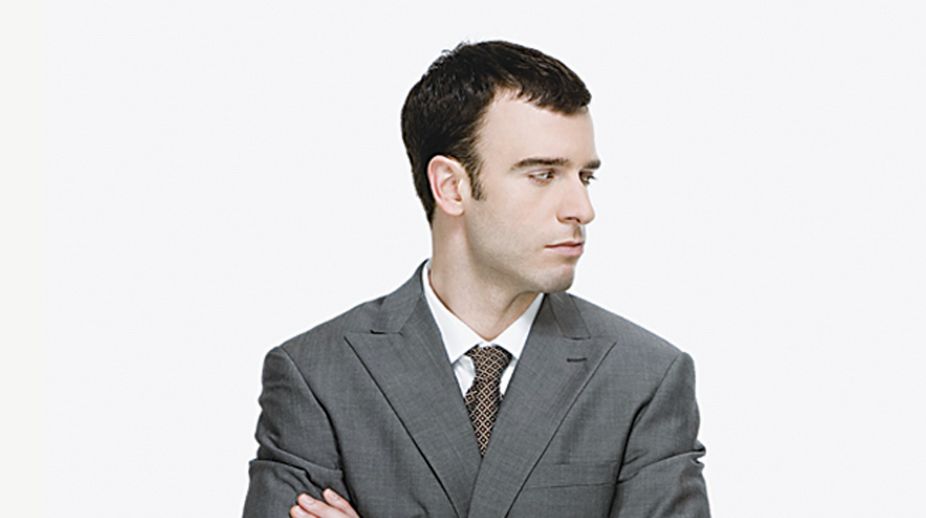Woman’s body found in Newtown bushes
Body of a young woman was recovered from the bushes near the Lohar Bridge in New Town today. The police have sent the body for post-mortem.
Poor body language habits can upend your whole image. Here are some major mistakes to avoid.

Representational Image
It’s not what you say, it’s how you say it. It’s a cliché, but it’s true. Body language is a crucial part of communicating. The way you act can warp the entire meaning of what you’re saying. That being said, bad body language habits are the often hardest habits to break. We become so accustomed to slouching, averting our eyes, or folding our arms that we barely even notice what we’re doing.
Here are several body language mistakes that are going to be tough to ditch. Still, if you’re able to quit them, you’ll definitely thank yourself later.
Advertisement

Fidgeting
Advertisement
If you’ve gotten into the habit of fidgeting, it can be difficult to snap out of it. But it’s important to take steps to reigning in this nervous habit.
Fidgeting demonstrates nervousness and a lack of power, as body-language expert and The Power of Body Language author Tonya Reiman previously told Business Insider.
Leave your hair alone. Constantly running your hands across your scalp and twirling your locks is pretty distracting. Plus, as ABC reported, it can damage your hair overtime. It can be hard to quit, so try playing around a stress ball instead of your hair.

Doing weird things with your hands
To gesture or not to gesture? That is the
question.
Some people keep too still while speaking, while others flail all over the place.
As The Washington Post reported, behavioural consultant Vanessa Van Edwards notes that using hand gestures while speaking is actually an effective way to engage your audience.
The trick is, avoiding the hand gestures that will trip you up. Don’t point, don’t pretend to conduct an imaginary orchestra (seriously), and don’t get too
choreographed
Adopting a defensive pose
Many people naturally cross their arms or hunch over a bit just because they don’t know what to do with their hands.
However, this posture can make you look uncomfortable, defensive, or untrustworthy.
“You should always keep your hands in view when you are talking,” Patti Wood, a body- language expert and author of “SNAP: Making the Most of First Impressions Body Language and Charisma,” previously told Business Insider. When a listener can’t see your hands, they wonder what you are hiding.”

Shuffling instead of walking
Humans are pretty judgmental creatures. We think we can tell a lot about someone based on snap judgments over something as simple as their manner of walking.
BBC reported that how we walk can actually determine our risk of being mugged. Criminals are less likely to target people walking with an air of confidence.
It can be hard to change up your walk once you’ve fallen into bad habits, but it’s important to walk with confidence and coordination. Don’t shuffle through life.
Appearing distracted
There’s nothing more irritating than talking to someone who’s clearly not paying attention to you.
Some people are just naturally distracted or busy, so it can be tempting to check your phone or watch at every available moment. Still, you’ve got to keep this impulse in check when you’re around others. Otherwise, you’ll just come across as a rude and uncaring person.
Forgetting to smile
Reiman previously told Business Insider that smiling demonstrates confidence, openness, warmth, and energy.
“It also sets off the mirror neurons in your listener, instructing them to smile back. Without the smile, an individual is often seen as grim or aloof,” she explained.

Slouching
Stand up straight. Terrible posture is easy to develop, especially if you’re slouched over a desk for the majority of the day.
Slouching doesn’t just make you look un-confident, writes Catherine New for Psychology Today, it’s also bad for your back. Improve your health and the image you present to the world by standing up straight.
Nonexistent or aggressive eye contact
Here’s another body language pitfall where moderation is key.
What Your Body Says (And How to Master the Message) author Sharon Sayler previously told Business Insider that the ideal amount of eye contact should be “a series of long glances instead of intense stares.”
Overly long stares can make whoever you’re talking to pretty uncomfortable. On the other hand, averting your eyes indicates disgust or a lack of confidence.
Being too still
It’s definitely good not to be jumping all over the place, constantly. However, you don’t want to be too eerily calm during conversations. This may make people feel uneasy, or that you’re not interested in what they’re saying.
Instead, try to mirror the person you’re speaking with. Don’t mimic them – they’ll probably get offended by that – but subtly copy some of their gestures and expressions.
Writing for Psychology Today, Dr Jeff Thompson notes that mirroring will leave people perceiving you as positive and persuasive.
It can be tough to break out of your poker face, especially if you’re just naturally not that expressive – but it’s worth trying, since it can improve how you’re perceived.
Mismatching verbal and non-verbal communication
You might be saying all the right things – but if your body language doesn’t match up with your words, you might end up rubbing people the wrong way.
In fact, researchers at Sacred Heart University devoted an entire study to this phenomenon. Their subjects were married couples, but their finding was pretty universal – when verbal and non-verbal messages do not align, “nonverbal signals carry the brunt of the emotional message.”
Advertisement